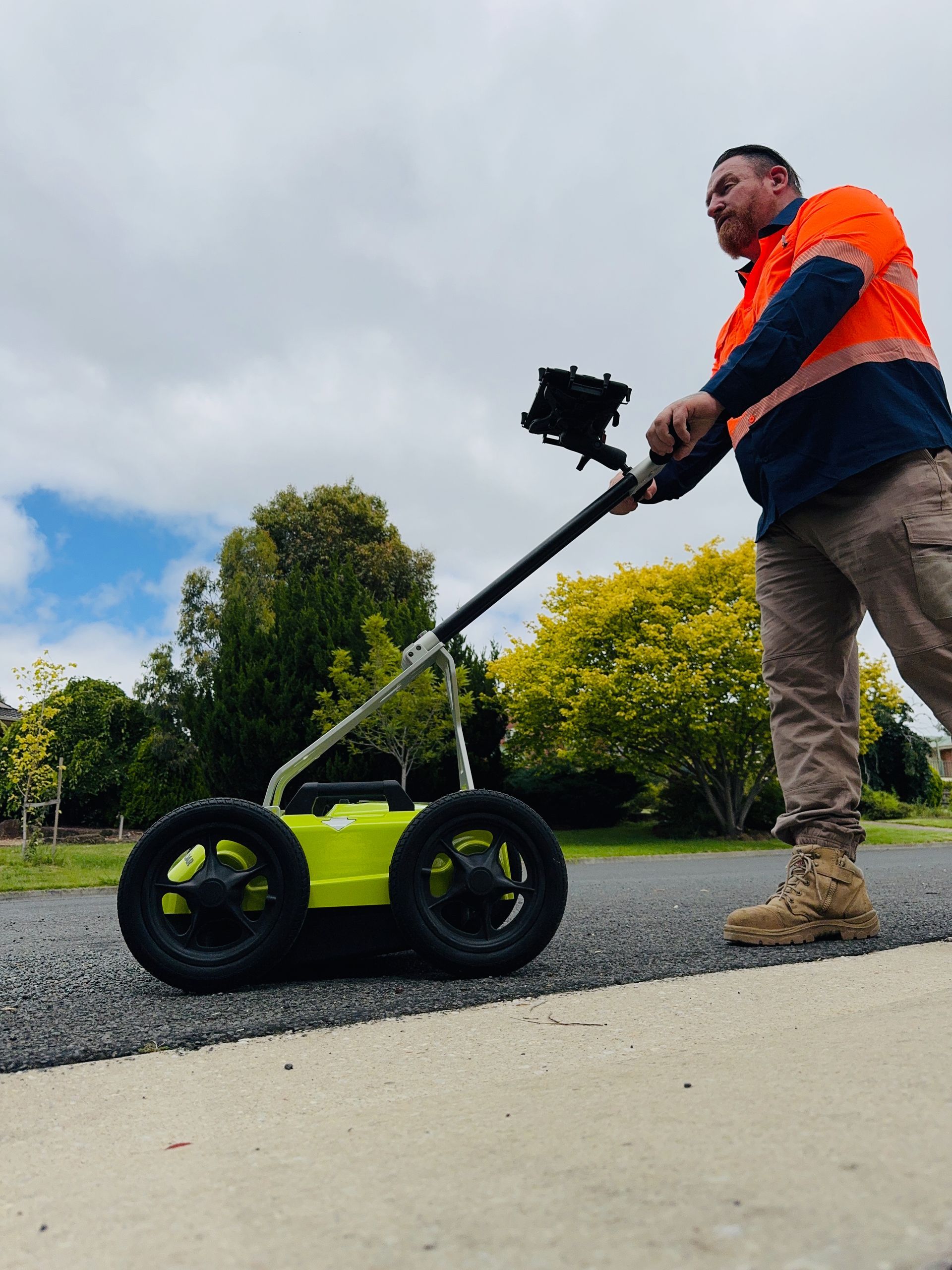Published ~ 20 January 2024
Underground Locator
Firstly, what is an Underground Locator?
An underground service locator is a certified and specialised Utility Contractor, equipped with advanced equipment and industry expertise to detect and identify underground pipes and cables accurately.
They are also referred to as:
- Underground Locator
- Pipe Locator
- Cable Locators
- Line Locator
- Underground Cable Locator
- Ground Penetrating Radar (GPR) Technician
- Telstra Locator
- Underground Locating Services
- Underground Service Detection
- Underground Service Mapping
Understanding Our Techniques:
The primary techniques employed by underground service locators include Electromagnetic Pipe Locator and Ground Penetrating Radar (GPR).
Electromagnetic Pipe Locator: This method utilises a two-piece set of equipment comprising a transmitter and a receiver. The transmitter emits an electromagnetic signal into conductive materials such as steel or copper pipes. By tuning the receiver to the specific frequency transmitted by the transmitter, professionals can detect and pinpoint the location of underground services. Different frequencies allow for the isolation of individual services amidst multiple underground utilities, enhancing accuracy and efficiency.
Ground Penetrating Radar (GPR): GPR technology involves the use of an antenna, typically mounted on a wheeled cart, to pulse radar waves into the ground. These waves penetrate the subsurface and bounce back upon encountering underground structures such as pipes, rocks, or tree roots. GPR enables professionals to visualise underground structures and detect non-conductive materials like plastic pipes.
When to engage Underground Locating Services?
The need for hiring an underground service locator arises whenever excavation or construction activities are planned in areas where underground services are present. This responsibility applies not only to private property owners but also to businesses, organisations, and public service providers reliant on underground infrastructure.
Private Areas: Property owners must ensure the protection of underground services within their premises. While damaging private services may not pose significant risks, it's essential to ascertain that critical services like underground power or gas lines are not affected, as they can lead to severe injuries or fatalities if damaged.
Public Areas: In public settings or areas where multiple stakeholders rely on underground services, the responsibility of protecting these services becomes even more critical. Any interruption or damage to public services can result in legal liabilities and financial losses for the responsible parties.
Underground Locator Services Costs:
The cost of hiring an underground service locator vary across the industry. However, the investment cost for Pulse Locating Services begins at $260 for the first hour, followed by $140 per hour for every other hour up to 8 hrs. Additional cost are typically incurred beyond 8 hrs and depending on the location of the task. Additional factors influencing the cost include the complexity of the job, the location of underground services, and the level of preparation required.
Things you can do that might help you save money.
Property owners can take several preparation measures to expedite the locating process and potentially reduce costs:
In consultation with Pulse Locating Services, you may consider submitting a Dial Before You Dig request prior to your Utility Locator undertaking the task. Doing so will provide an opportunity for asset owners to action any tasks necessary and forward appropriate information.
Depending on the location that requires surveying, removing any debris or obstructions from areas where service locators need to access underground utilities will help greatly. When you underground locator is on site, you want them to be actioning their skills. The last thing you want them to be doing moving rubbish so they can access places.
Obtaining underground service plans from contractors, facility maintenance personnel, or property managers can provide valuable insights into the location and layout of underground infrastructure.
Conclusion:
Engaging the services of an underground service locator is essential for any construction or excavation project involving underground services and, in some cases, mandatory. By understanding the techniques, responsibilities, and cost factors associated with hiring a locator, property owners and project managers can ensure the safe and efficient execution of their projects while minimising risks and liabilities.


